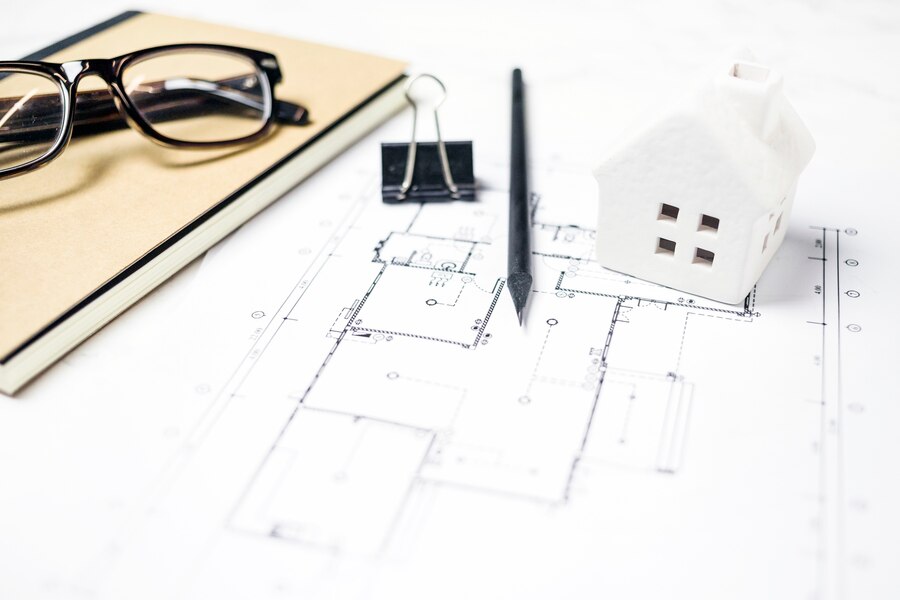What is Sustainable Architecture?
Sustainable architecture is an approach to designing buildings that prioritizes environmental sustainability and social responsibility. It involves creating structures that minimize negative impacts on the environment and maximize positive impacts on occupants and communities. As the world grapples with the challenges posed by climate change, sustainable architecture has become more important than ever before.
In this blog post, we will explore the current state of sustainable architecture, emerging trends, and innovations that are shaping the future of building design.
What is Green Building?
Green building definition refers to the practice of designing, constructing, and operating buildings that minimize environmental impacts throughout their lifecycle. This includes everything from the selection of building materials and site orientation to energy efficiency and water conservation measures.
Green building aims to create healthier, more comfortable, and more sustainable environments for occupants while reducing the building’s ecological footprint. Eco building or eco-friendly building is another term for green building, focusing on reducing our carbon footprint and creating sustainable environments.
A green building project is a comprehensive approach to designing, constructing, and operating buildings that minimize environmental impacts throughout their lifecycle.
Sustainable Green Building: The Future of Construction
Sustainable green building is not just a trend; it’s the future of construction. As the world becomes more conscious of the need to protect the environment, green building practices and green architecture concepts are becoming increasingly mainstream. There are many examples of green buildings around the world that showcase the potential of sustainable design.
One notable example is the Bullitt Center in Seattle, Washington, which is considered one of the most sustainable buildings in the world. The building uses a rooftop solar array to generate electricity, collects and treats rainwater for irrigation and flushing, and features a living wall that provides insulation and habitat for native plants and animals.
Requirements of Green Buildings
While there are many checklists and guidelines for green building, it’s important to remember that sustainable design goes beyond meeting minimum requirements. True green building requires a holistic approach that considers the building’s entire lifecycle, from design and construction to operation and maintenance. This means considering factors such as material selection, energy efficiency, water conservation, indoor air quality, and waste reduction.
Green building design is not just about saving energy and reducing waste; it’s also about creating healthier environments for occupants. This includes features such as natural lighting, ventilation, and acoustic design. Green building features can range from simple elements such as low-flow faucets and LED light bulbs to more complex systems such as green roofs and rainwater harvesting.
Green construction is not just about building sustainable buildings; it’s about building for the future. This means considering how the building will perform over its entire lifecycle, from construction to demolition.
- Environmental Architecture: Environmental architecture is a branch of architecture that focuses on designing buildings that are environmentally sustainable and responsible. It involves the creation of buildings that minimize their impact on the environment and maximize their use of natural resources.
- Importance of Green Building: The importance of green building lies in its ability to reduce the negative impact of buildings on the environment. Green building helps to mitigate these problems by using renewable energy sources, reducing water consumption, and minimizing waste generation.
- Components of Green Building: Green building components work together to create a sustainable and environmentally friendly structure. Some of the key components of green building include:
- Building Orientation: Proper orientation of buildings can maximize natural daylight and reduce the need for artificial lighting and heating.
- Insulation: Effective insulation helps to reduce heat loss in cold climates and heat gain in warm climates, minimizing the need for heating and cooling.
- Window Design: Windows should be designed to allow maximum natural light and minimize heat loss. Double-glazed windows and low-e glass can help to reduce energy consumption.
How to Achieve Sustainable Architecture
Achieving sustainable architecture requires careful consideration of various factors, including site selection, building materials, energy efficiency, water conservation, and indoor air quality. Here are some ways to achieve sustainable design architecture:
- Site Selection: Choose sites that are easily accessible by public transportation, pedestrians, and cyclists. This reduces the need for cars and helps to minimize traffic congestion and air pollution.
- Building Materials: Use locally sourced, recycled, and sustainably produced materials whenever possible. Avoid using materials that contain harmful chemicals or contribute to deforestation.
- Energy Efficiency: Incorporate energy-efficient systems such as solar panels, wind turbines, and geothermal heating and cooling systems. Use high-performance windows, insulation, and weather stripping to minimize heat loss and gain.
- Water Conservation: Install low-flow fixtures and greywater reuse systems to reduce water consumption. Use drought-resistant plants and rainwater harvesting systems to minimize potable water usage.
- Indoor Air Quality: Use non-toxic paints, adhesives, and flooring materials to maintain good indoor air quality. Provide adequate ventilation and incorporate natural daylight and fresh air into the building design.
Benefits of Sustainable Architecture
The benefits of sustainable building architecture extend beyond environmental sustainability. Here are some of the key benefits:
- Cost Savings: Sustainable buildings consume less energy and water, resulting in lower utility costs. They also require fewer repairs and maintenance, leading to long-term cost savings.
- Health and Well-being: Sustainable buildings provide healthier indoor environments due to better air quality, natural lighting, and reduced noise levels. This leads to increased occupant satisfaction and productivity.
- Environmental Sustainability: Sustainable buildings reduce greenhouse gas emissions, conserves natural resources, and minimize waste generation. This contributes to a more sustainable future for generations to come.
- Marketability: Sustainable buildings are highly sought after by tenants and buyers, making them more valuable and attractive in the marketplace.
- Importance of Sustainable Architecture Sustainable construction architecture is crucial in today’s world for several reasons:
- Climate Change: The building sector accounts for approximately 40% of global greenhouse gas emissions. Sustainable architecture can significantly reduce these emissions and help combat climate change.
- Resource Depletion: The world’s population is projected to reach 9.7 billion by 2050, putting immense pressure on natural resources. Sustainable architecture promotes resource conservation and efficiency.
- Human Health: Poor indoor air quality and inadequate natural lighting can negatively impact occupant health. Sustainable architecture emphasizes healthy indoor environments and natural lighting.
- Economic Benefits: Sustainable architecture can create jobs, stimulate local economies, and increase property values.
Recent Innovations in Sustainable Architecture and Construction
The field of sustainable architecture and construction is constantly evolving, with new innovations and technologies emerging regularly. Here are some recent innovative architecture trends:
- Cross-Laminated Timber (CLT): CLT is a sustainable alternative to traditional wood framing. It consists of layers of wood stacked perpendicular to each other, creating a strong and stable structure. CLT is made from locally sourced wood and can be used for both residential and commercial buildings. It has numerous benefits, including reducing carbon emissions, conserving energy, and creating a healthier indoor environment.
- Bio-based Insulation: Bio-based insulation materials are made from renewable resources such as corn starch, sugarcane, or potato starch. They offer excellent thermal performance, are non-toxic, and can be composted at the end of their life cycle. Bio-based insulation is a sustainable alternative to traditional insulation materials like foam and fiberglass.
- Green Roofs: Green roofs are covered with vegetation and can be installed on both new and existing buildings. They provide numerous benefits, including reducing stormwater runoff, absorbing carbon dioxide, and creating habitats for wildlife. Green roofs can also reduce energy consumption by providing insulation and reducing the need for heating and cooling.
Conclusion
In conclusion, sustainable architecture and construction are rapidly evolving fields that offer numerous opportunities for innovation and growth. Recent innovations such as cross-laminated timber, bio-based insulation, green roofs, passive house design, modular construction, smart glass, and building information modeling are transforming the way we design and build structures, creating healthier, more sustainable environments for occupants and communities alike. As technology continues to advance and consumer demand increases, we can expect even more exciting developments in the field of sustainable architecture and construction.




